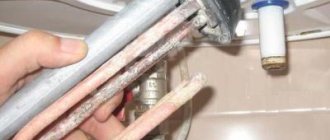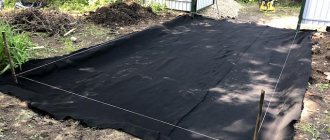Polyurethane foam is used to solve many construction problems related to sealing rooms and fixing various kinds of parts. This material owes its popularity to its high adhesion, which, if it gets on foreign objects, becomes more of a disadvantage than an advantage. All this is because it is quite difficult to clean polyurethane foam from clothes if it has already hardened. But by using some methods and means, the problem can be dealt with without significant effort or damage to soiled items.
Removing frozen foam
Removing frozen formations is much more difficult; here, in addition to various means, patience and perseverance are required.
It is necessary to understand that installation residues can be removed several times or using different methods. First you need to use store-bought solvents. Before purchasing, read the instructions and find permission to clean the surface exactly like yours. All these solvents are applied to the contaminated area with a brush and removed with a spatula. Pro tip! When removing expensive coatings or wooden products, it is necessary to try the purchased product in an inconspicuous place, as it can have an unpredictable effect.
All stages of removal work take place in this order:
- using a construction knife, blade or razor, remove the maximum accessible layer of foam to avoid scratching the surface;
- a thin layer of polyurethane foam is treated with the selected product;
- After 15–30 minutes, rub it with a kitchen sponge. If the surface allows, you can use sponges to clean pans.
GOST 30971-2012 for installation of plastic windows
GOST 30971-2012 for a window system specifies general technical conditions for installation seams and joints of window systems to wall openings. The norm is valid in the Russian Federation and 5 other CIS countries. “Installation of a plastic window according to GOST” requires clear measurements of the slope of the profile relative to the opening. Checking is carried out with a plumb line and level.
At the installation step, it is fundamentally correct to calculate the number and placement of anchors in accordance with GOST. To install a double-hung window, 14 anchors are needed. This amount seems unnecessary, but compliance with the requirements of GOST 30971-2012 guarantees the durability of the PVC window. Laying a 3rd layer of seam for vapor barrier is also irrational, but it increases the service life of the heat insulator by 2-3 times.
Removing construction foam from the body and clothing
We recommend reading our other articles
- Features of high-quality entrance doors
- Biotal - a high-quality solution for wastewater treatment
- Advantages of modern magnetic contact sensors
- Landscape design from professionals
Dimexide is a pharmaceutical gel that softens foam well
- The easiest option is to scrape off the dried polyurethane foam with a piece of wood or a spatula from plastic windows or from a door. If the plastic is smooth (without a pattern), then it will easily come off without leaving a mark.
- If you have to deal with dry polyurethane foam, then the top, convex layer is cut off with a knife from the plastic windows, and a small amount of vegetable oil is applied to the remaining spot. Keep the oil for about 15 minutes. It will soften the foam, and then it will be removed even with a simple dishwashing sponge.
- Dimexide is a pharmaceutical gel. It softens the foam well, allowing you to clean even old stains. It is not expensive, so it is very profitable to use. Before use, put on gloves, then apply the gel to the stain with a brush and distribute it. After 5 minutes, the stain can be cleaned off with a cloth without any problems.
If polyurethane foam gets on the floor covering during work, it is best to use strong specialized cleaning agents. Although in some cases other methods are also suitable.
Wooden floor coverings are always washed with special solvents
Important!
Specialized cleaning mixtures are not cheap, but they can easily clean floor coverings at home!
The method is always selected depending on the type of flooring in the house. If you choose the wrong product, stains may remain!
- In the case of linoleum and laminate, dimexide or acetone solvent will help. The top layer of foam is always cut off, and the product is applied to the remaining stain. After a few minutes, the residue is washed off.
- The carpet can be cleaned with plain water. The foam becomes hard under the influence of water and is simply removed with a spatula or a rough brush.
- Wooden floor coverings are always washed with special solvents. If there are none, you can try dimexide, but it is not always effective. The product is usually applied for 30 minutes, no less, and then removed with a stiff brush.
The solvents discussed above usually have the maximum effect. But their main drawback is that they can ruin clothes (change color, leave holes, etc.)
So you need to use them with extreme caution
- The top layer of the mixture is removed with a sharp blade.
- Apply the solvent to the stain using a cotton swab soaked in it.
- After 5-15 minutes, scrape off pieces of the mixture with a rough sponge.
The second option is to rub the stain with pure gasoline without impurities. After a quarter of an hour, foam particles are removed from clothing with a sponge. If there is still something left, then you need to repeat the procedure. And washing with high-quality powder will help get rid of gasoline on fabric.
The third method is freezing. When there are only small stains on the fabric, you can put the items in a bag and put them in the freezer. After 60 minutes, the items are taken out and the stains are simply removed by hand (they will fall off easily). Washing will help remove any remaining stains.
If these methods do not help, then the fabric cannot be saved from the stain. The simplest method is to hide this place behind a patch or embroidery, make a pocket or something similar there.
Cleaning various surfaces
To quickly clean surfaces made of metal, wood, plastic, varnished, painted or matte, you should avoid using aggressive agents that can corrode the protective layer of the coating.
Experts recommend choosing the safest cleaners designed to solve this problem.
Laminate and linoleum
Special cleaners can be used to remove sealant residue from flooring such as laminate and linoleum.
The sealant is cut off with a knife, and traces of it are treated with a solvent applied to a clean rag or sponge. The product is left for 5-10 minutes, after which the residue is cleaned with a stiff brush.
Carpets
If the foam has dried on a carpet, carpet or any fabric base, then it can be removed using varnish solvent, acetone or Dimexide. Use a sponge or clean rag soaked in liquid to treat the problem area of the coating. After this, the product must be washed or dry cleaned, which will quickly eliminate the unpleasant chemical odor.
Another way to remove sealant is to use a regular soap solution. The problem area is moistened with the solution and left to soften for several hours. The remaining foam is removed with a spatula or a stiff brush.
Doors
Removing sealant from the surface of doors is a labor-intensive procedure, especially if it is hardened.
To clean wooden or MDF doors, use Dimexide, soft brushes and sponges. The application process is as follows:
- The top part of the foam is cut off with a sharp knife so as not to damage the door leaf.
- All stains should be thoroughly wiped off with a sponge soaked in Dimexide.
- After treating the surface, the remaining sealant is removed with a brush or a clean piece of cloth.
To clean a metal door from foam residues, you must perform the following steps:
- The sealant is carefully cut with a thin knife so as not to leave scratches or damage on the iron surface.
- A soft sponge is soaked in vegetable oil to treat problem areas.
- After the foam has softened, the surface is cleaned with warm soapy water and wiped dry.
Window
Often during installation, metal-plastic windows become contaminated with residues of the installation compound.
To effectively clean smooth plastic surfaces, use:
- Special solvents. Modern solvents are used to combat hard foam. The most popular are white spirit and Dimexide. They are suitable for all types of surfaces, and cleaning plastic is similar to that used for wood and metal.
- Liquid for cleaning the mounting gun. The method of application is the same as with Dimexide, when the contaminated surface is thoroughly wiped with a soaked sponge. To avoid staining the plastic, it is better to use a white sponge.
- Homemade solution. An effective remedy for removing residues of any type of sealant can be prepared at home. The solution will require: 60 ml of gun cleaning liquid, 25 ml of table vinegar, 15 ml of acetone and 15 ml of A649 cleaner. The contaminated surface is treated with the finished composition. Remains of sealant are removed with a brush or sponge.
- Vinegar solution. You can remove small stains from foam with a 9% vinegar solution. A piece of cloth or sponge is wetted and the surface is wiped. Residues are removed with a brush.
- Vegetable oil. To soften the frozen mass, use any oil that is preheated to 55 degrees. The surface must be thoroughly treated and left for 20 minutes for the desired reaction. Remains of the composition are removed with a brush or spatula. To remove the oil film, the cleaned plastic is washed with warm soapy water.
Removing sealant residues from various surfaces using effective and affordable means is a labor-intensive and responsible process. Therefore, it is much easier to prevent such troubles than to eliminate their consequences.
Terms of use
The ambient temperature during work should be in the range from -10 to +30 degrees. Ideal temperature is +20 degrees. Under such conditions, quality indicators will be maximum, which are only provided by this manufacturer. The humidity in the room should not be high; an acceptable humidity level is 60%.
The place where the composition will be applied must be prepared in advance. There should be no dirt, chemicals, grease, oils or paint coatings. If the air temperature is low, then ice and snow must be removed from the surface.
Polyurethane foam - what is it?
Polyurethane foam is a polyurethane-based sealant that is produced in the form of a solution packaged in aerosol cans. Scope of application: construction and repair. The main function is to fill cracks and crevices to improve thermal insulation, waterproofing and sound insulation.
This product first appeared on the shelves of construction stores not so long ago, but quickly won the hearts of both experienced builders and beginners. Previously, cement and tow were used, but this took a lot of time and effort. Now, sealing cracks is done in a matter of minutes, because the substance does not require preliminary preparation or equipment.
As the foam hardens, it turns into hard polyurethane foam, which, when it gets on the skin, harms its cells, cutting off access to oxygen. In addition, polyurethane foam causes skin irritation and an allergic reaction. Such risks can be reduced by using personal protective equipment (work clothes and rubber gloves).
How long does it take to dry?
Polyurethane foam has numerous positive properties: excellent adhesion, low shrinkage, ease of use, low thermal conductivity, and others. Individual properties are important when choosing products, as they determine the areas of application. And some parameters will be useful to the contractor already during the work. One of these parameters is the duration of drying and curing, knowledge of which allows you to have information about when it is possible to continue working with assembly joints.
What special means should be used to remove polyurethane foam?
- Dimexide removes foam well from surfaces - this drug can be purchased at the pharmacy. Due to its composition, it destroys the structure of the foam.
- Acetone is effective for fresh stains. If the foam has already hardened, acetone will not help.
- White spirit - can be used to remove small residues of foam after the bulk has been removed with a knife.
Sometimes it makes sense to use special tools. They are produced differently for fresh foam and already hardened foam.
You should also pay attention to what surfaces the product is intended for.
Here are some options:
- eco-cleaner for polyurethane foam from Tytan. Designed to remove uncured substances and glue. Has the form of an aerosol;
- Bau Master cleaner. Used to remove fresh splashes from surfaces, clothing and skin;
- Soudal cleaner. It is produced in the form of a paste with a gel-like consistency, complete with a brush for applying the product and a spatula for removing it. Easily destroys foam residues on non-porous surfaces;
- cleaner for hardened polyurethane foam Kudo Foam Remover. Effectively removes residues of one-component foam from surfaces made of metal and plastic. It can also be used to get rid of other products containing polyurethane: various sealants, paints and glue;
- Quilosa Orbafoam Remover. The product contains an aggressive mixture of solvents. Damage to painted and varnished surfaces may occur, so apply the cleaner carefully, avoiding contact with adjacent areas.
The use of polyurethane foam rarely goes without contaminating the floor, furniture, and personal belongings, so it makes sense to take care of purchasing cleaners in advance. They can be bought at any hardware store.
Any cleaner is a strong chemical, so work should only be done with gloves.
Do not spray them near an open fire, and do not violate the integrity - pierce or pierce already used cans. If the cleaner gets into your eyes, rinse them with plenty of running water and consult a doctor.
We remove foam from skin and hair using different means
It is best to use special MP solvents. They are now on sale in a sufficient selection. There are products for various surfaces, including skin.
However, it happens that you need to remove a stain immediately, but there is no special product. How to remove foam?
Liquid
- Carefully remove fresh flakes with a dry napkin or stick from the edges to the center. Do not smear it on the surface under any circumstances;
- Treat remaining stains with a cloth moistened with foam cleaner. This product is sold in aerosol containers and produced by foam manufacturers and is used to clean the mounting gun after use. It removes liquid foam well, but is useless against hardened foam. Acetone is also suitable; it is part of the cleaner and works the same way. You can also use acetone-based nail polish remover;
- If none of this is available, vegetable oil will help. It is quite effective and does not damage the skin;
- If you have nothing on hand other than wet wipes for your hands, try using them. Might work;
- After getting rid of the stain, wash the skin thoroughly with soap and water and apply a rich cream - solvents have a negative effect on it.
When removing foam from your hair, place plastic film under the stained strand to prevent the product from getting on your scalp.
Video: how to wipe off polyurethane foam using wet wipes
If the foam has dried, it becomes much more difficult to remove.
Withered
If the foam has already dried, you cannot do without mechanical cleaning, even after pre-treating it with some kind of compound
Take a pumice stone, a heel grater or fine sandpaper and carefully rub off the dirt, being careful not to damage the skin; In some cases, vegetable oil can also help. Apply warm oil liberally to the stain and wait 20-30 minutes
During this time, the MP will soften and it will be easy to scrape it off simply with your nails; Experienced craftsmen use this method: hold your hands in a saline solution for 5 minutes, wipe off the residue with a pumice stone; MP can be removed from hair using a solvent or pharmaceutical drug dimexide. But only if you are faced with a choice: try to remove or wash the strand. Pre-isolate the treated area from the skin by placing polyethylene or thick fabric. Apply the product to the stain and leave for 10-20 minutes, then remove with a dry, clean cloth. Comb out the remains with a fine brush and wash your hair; For your nails, make a bath with warm oil. If this does not help, you will have to remove the residue with a manicure file.
Moreover, do not use the second remedy without removing the previous one.
The result of the experiment can be seen here
If your efforts are unsuccessful, the remaining foam will fall off on its own within a few days. The fact is that the skin is constantly renewed and dead cells from its surface are exfoliated. This will happen along with the remaining contaminants in 3-7 days.
To speed up this process, take a hot bath. Foam will be removed more easily from steamed skin.
Polyurethane foam breaks down in the sun. In sunny weather the process will accelerate even more.
It’s better not to allow a situation where you need these tips. Protect your hands with gloves, your body with thick clothing, and hide your hair under a hat. And, just in case, keep a special solvent on hand.
Cleaning clothes
The question of how to clean polyurethane foam from clothes is relevant for many people, because clothes most often end up contaminated.
It is almost impossible to completely remove foam from fabric, since it binds very tightly to the fibers. However, it is quite possible to try to significantly reduce its effect on the fabric. It’s worth saying right away that it’s better not to use substances containing acetone, since acetone can change the color of clothes and even ruin them.
How to wipe off polyurethane foam that gets on clothes? The following options are suitable for this:
- White Spirit;
- stain remover;
- gasoline solvent. This is pure gasoline that does not contain any impurities. This is the one you should use;
- foam solvent.
Now let’s look at not how to wash foam from clothes, but how:
- The foam cap (fresh or already hardened) is removed from the surface of the fabric.
- One of the above compounds is applied to the stained area.
- There is a pause of 15 minutes.
- Remaining substances are removed with a cloth, sponge or soft brush.
- If traces of foam remain on the fabric, the procedure can be repeated.
- Clothes are washed using powder and stain remover.
We use the freezer
This method can help if there are isolated splashes of foam on clothing, as well as if foam gets on delicate fabrics.
Don’t know how to remove polyurethane foam from clothes without using solvents? We tell you:
- The contaminated item should be placed in a plastic bag, and the bag should be placed in the freezer.
- After 1 hour, the clothes should be removed from the freezer, and pieces of frozen foam should be removed from the fabric by hand.
- If stains remain, they can be treated with a stain remover.
- Clothes need to be washed.
It is easier to prevent troubles with foam from occurring than to later eliminate the consequences of such mistakes. However, using one of the above methods, you can completely or partially eliminate pollution.
Share Like Share Tweet Pin
How to remove polyurethane foam from a varnished surface
Also check out these articles
- Silicone sealant
- The main advantages of using foundation blocks
- Heater for garage
- Features of high-quality entrance doors
Dried foam from hands or other parts of the body may fall off on its own after a few days. So you can just wait. But if it interferes, you can remove it using several methods.
- A simple salt solution. A solution is made in a bowl, hands are dipped into it, held for a couple of minutes, and the dirty area is cleaned with a pumice stone or a hard sponge.
- Spray foam can be wiped off at home by lubricating the skin with gasoline, alcohol, acetone or 3% vinegar. The top, convex layer of foam, of course, should be removed, and the remains can be easily cleaned with these substances.
Important!
Polyurethane foam is non-toxic, so there is no need to worry if it gets on your skin, it is not dangerous!
- Warm vegetable oil is spread on your hands and rubbed. Then the hands are sprinkled with washing powder, it is foamed, and then the skin is thoroughly washed with water and lubricated with cream.
Still wet mounting foam is always washed off with plain soap.
- Still wet mounting foam is always washed off with plain soap. Hands are washed well, you can rub them with a washcloth, and then rinse with water.
If foam has dripped onto the metal, then you need to cut off the top layer and rub the rest with simple vegetable oil. After 30 minutes, the stain can be easily washed off with a sponge or cloth. And the fat remaining after cleansing can be washed off with any soap.
The glass can be washed after the foam has hardened. Using a sharp object (like a knife), the composition is scraped off the glass. Usually you just need to pry it and it falls off on its own. There are usually no traces left. But if there are blurry spots, you can remove them with a solvent suitable for treating glass.
The varnished surface can be severely damaged by the mounting mixture. You shouldn’t wash it off the door, floor or other materials when it’s wet, but waiting for it to dry is not an option either.
You need to wait for the moment when it becomes a little rubbery (stops getting dirty) and carefully pull it from one end, where it is easier to lag behind. If the right moment is chosen, the foam will quickly separate from the varnish, leaving no traces.
Important!
If the mounting mixture has dripped onto a varnished surface, it is not recommended to use solvents to clean it! They can irreversibly damage the material.
The second option is to dissolve 15 g of salt in a glass of water and treat the stain with this mixture. After a few minutes, use a brush to remove the residue from the door or other surface covered with varnish.
If these options do not help and the mixture is still there, you will have to use solvents. Of course, this is prohibited, but in some cases it helps. To begin with, select the softest, most gentle solvent. Then it is checked on a distant area of the varnished surface that is not visible. After some time you need to check it. If the surface is not distorted and the color is the same, then you can wash off the installation mixture with this solvent.
A special gun is most often used to apply polyurethane foam. During operation, it becomes dirty, and in order for the mechanism to last longer, it must be cleaned after use. So, how to clean a spray foam gun?
- The cheapest method is mechanical. The remaining foam is simply scraped off the gun with a knife, screwdriver or similar tool. Of course, some foam will remain and it will not be possible to remove it completely, but this is a simple option available to everyone.
- If the gun is used frequently, it must be kept completely clean. A simple solvent “PENOSIL”, “Isofoam r621” or “OPPA” will allow it to be cleaned. A can of cleaner is inserted into the gun and the trigger is pulled. At first, a white, dirty liquid (composition with foam) will flow, and when it becomes transparent, it means that the surface has been completely washed.
How to ensure surface protection during work
Even a professional builder cannot boast of the complete absence of unwanted lumps of foam. Therefore, if it is impossible to avoid polyurethane foam stains, it is necessary to protect all surfaces from them. Repair experts recommend following three rules.
- Work clothes. Be sure to pick up things that you will throw away with a light heart after renovation. It is very difficult to wash construction foam from clothes. Remember that most often your hands and hair suffer from working with foam. Therefore, be sure to wear rubber gloves and do not take them off under any circumstances. Pull a hat over your head or tie a scarf, completely hiding your curls under the headdress. Neglecting the rule can lead to an unplanned haircut.
- Rescue oilcloth. Don't rely on your super accuracy. Light foam can quickly contaminate adjacent surfaces. Therefore, before starting work, prepare the area by covering with film all objects located in the area of work with sealant.
- Vegetable oil. This is another home trick that will help protect varnished or painted surfaces from foam. Before work, generously lubricate them with vegetable oil. In this case, lumps of sealant, even if they get to the surface, will not stick. Polyurethane foam does not have the ability to adhere to oily coatings.
Solvents for polyurethane foam
Polyurethane foam is easy to apply, hardens quickly, and therefore you need to work with it carefully. Foam contact with water causes hardening, so this cleaning product is not always suitable
The same goes for simple cleaners. They provoke skin irritation, and as for different surfaces (plastic, glass, etc.), they can simply ruin them. But then how to clean the polyurethane foam.
In addition to polyurethane foam, any hardware store also sells its solvents. They are available in two types:
- to wash fresh mounting foam;
- to clean dried foam.
You can buy both options or at least one of them. They are in cylinders and are convenient to use, so there are usually no difficulties with use.
Interesting! The easiest way to remove fresh foam is not old foam!
The most popular solvents are listed below.
Photo of solvent for removing polyurethane foam PENOSIL Foam Cleaner
- "PENOSIL Foam Cleaner" easily removes fresh foam from most surfaces.
- ULTIMA Prafessional" is another effective solvent for fresh compounds.
- Makroflex" can remove stains from flooring, as well as wooden doors, windows and walls.
- Solvent 646 is suitable for some fabrics and flooring, but is not used on siding or plastic.
- "PENOSIL Cured Premium" quickly removes dried polyurethane foam from almost any material.
- Cosmofen" is a substance that is often used by installers of plastic windows. It cleans both dry and wet stains, depending on the type of product.
Detailed description of the sealant
Interesting! This type of sealant began to be used in the construction industry recently, but despite this, it quickly supplanted its competitors.
The advantages of polyurethane foam include:
- easy application;
- affordability;
- durability.
And the most important thing is that polyurethane foam has sound/heat insulating qualities. Often, building materials are used during the installation of doors and window units. As it expands, it completely fills the voids, gluing the working surfaces. How long the polyurethane foam should dry directly depends on the thickness of the layer. For example, if it is 5 cm, then it will harden within 3 hours after leaving the container. In solid form, the material is not afraid of precipitation, cold, mold, mildew and even electricity. But the same cannot be said about ultraviolet radiation. But this drawback is easily eliminated by applying a layer of decorative plaster.
We act immediately
Polyurethane foam sealant is used for repair, construction and finishing work. It is mainly used for sealing cracks and insulating rooms. It is difficult to imagine carrying out such work without the use of polyurethane foam.
When using the sealant, you should take care of safety and wear gloves so that the composition does not remain on your hands. However, not everyone follows this recommendation and often the sealant gets on the skin. And here the question arises: how to wash your hands from non-dried polyurethane foam at home?
If the mixture accidentally ends up on your hands, it must be removed immediately, otherwise it may harden and then it will be very difficult to remove. To do this, take a damp cloth and remove the foam from the skin. Try not to smear the product. Move from the edge of the spot to its center. Remove the outer layer first, and then move on to the remaining one. There is no need to rub hard.
An equally effective method is hot water. Take the basin. Fill it with hot water, add a little liquid soap (preferably laundry soap), washing powder or fabric softener and place your hands there for a few minutes.
Secrets of professional installers
Wash
Professional installers use a homemade composition, which in construction slang is called “wash.” Its components:
- acetone - 100 g
- solvent 649 - 100 g
- vinegar essence - 200 g
These components are mixed and used to remove foam. Dampen a clean (not colored) rag and wipe off the stain. If necessary, repeat the cleaning until the expected result is obtained. The main condition is a preliminary check of the reaction of the plastic to the composition. If it cannot withstand contact with the remover, this method cannot be used.
Cleaning the floor covering
Modern flooring consists of painted boards and fiberboard, linoleum, carpet, laminate (parquet boards), in fact, classic parquet, tiles:
- A coating based on PF-266, a floor paint, has good contact with polyurethane foam. Removal: cut off the bulk and soften with sunflower oil.
- PVC base. Or, everyone knows and understands the name, linoleum. The method for removing foam is scraping with plastic or wood. The residue, if trampled, is dissolved by Dimexin. Acetone is undesirable; it can leave behind irremovable streaks and stains.
- Carpet, carpet, rug. One of the most difficult cases. Two options. The first - the foam gently fell like a balloon and hung on the fibers. Elimination by mechanical means. We just take it with our hands and tear it off. The victim is a few threads. The second case is that the sticky composition penetrated into the soft pile and formed a tangle. It would be a pity to cut it out completely, like animals, because it won’t grow back. A product to dissolve dry foam will help (be sure to read the instructions!) or hot soapy water - make a compress from a rag. The foam will soften after one to two hours of exposure and can be removed with a stiff nylon brush. The procedure will have to be repeated several times.
- Laminate. Two options. In the first case, with a “branded” flooring manufacturer, the dried foam can be simply scraped off - the surface is a high-quality layer of melamine varnish. From a coating of unknown origin, only the bulk can be mechanically removed. Completely polyurethane foam from the laminate is removed with Dimexin or a special product.
- Tile. Glazed or matte. The smooth enamel coating can be cleaned mechanically. The matte surface will leave traces of installation marks from the foam. Removal with acetone, Dimexin, vegetable oil and water.
- Own body. Getting into polyurethane foam is a one-and-done deal. Not painful, but unpleasant. Most often, the hands suffer. There is no solvent nearby, no problem. Don't run, first of all, rinse it off under water. Moisture is a catalyst for foam. If there is dust, any construction mixtures, or wood shavings nearby, dump the soiled areas in these compounds. This will neutralize stickiness. Further cleansing of skin areas after 20~30 minutes. Not a joke, but wash by hand, say socks. The foam will go away along with the dirt from things. Or give your hands a hot bath, then wash off with soap and a soft brush. Or wait, take your time, and wash it in several steps.
(Visited 25 times, 25 visits today)
Share
What not to do when washing foam from your hands
In the fight against polyurethane foam on their hands, many resort to using various products that are not only ineffective against the sealant, but can also damage the skin. The following substances should not be used:
- acids (vinegar) - products will not help get rid of the sealant, but can lead to a chemical burn, especially when using a high-percentage essence;
- alkali - the use of drugs disrupts the acid balance of the epidermis, causing irritation and other unpleasant sensations;
- “Dimexide” is widely used to effectively remove sealant, but its use without medical supervision can be hazardous to health.
To protect yourself from getting the sealant on your skin, carry out construction work wearing gloves, goggles and a protective suit.
You can wash the polyurethane foam using special compounds and home remedies, but this will require considerable time and physical effort. To avoid having to deal with contamination, follow simple safety rules during repair or construction work: wear gloves, goggles and a protective suit, cover the floor, furniture and other surfaces with oilcloth. Also make sure you have a special solvent, which in case of a mistake will help you quickly and effortlessly get rid of the foam.
Scope of application
Most often, polyurethane foam is used in the process of installing windows and doors, laying electrical wiring and pipelines. Due to the high thermal insulation in this way, it is possible to foam seams and grooves in cooling and heating systems, cracks in the roof and when insulating the surface of walls, floors or ceilings. It perfectly fastens wall panels and foam boards, providing excellent waterproofing. It is applied to the outside of steel or cast iron bathtubs to reduce heat transfer from the metal when the bathtub is filled with hot water. Using polyurethane, you can insulate the space behind the sheathing of PVC panels. In almost half of the repair processes it remains an indispensable material.
Without harming the gloss - how and how to remove hardened polyurethane foam?
Cleaning polished or painted surfaces is doubly difficult, because sometimes it is simply impossible to do without mechanical action (scraping, rubbing, grinding). Strong solvents, which promise to soften even hardened foam, can equally well do the same to the coating or to the material itself that you have stained with foam.
In this case, choose the lesser of two evils. If the surface is smooth, a sharp knife or slightly sharpened spatula can easily remove foam stains. You can try to polish the scratches using an angle grinder (grinder) and a special attachment. This treatment is much more gentle than the use of chemicals.
If you prefer solvents and cleaners, rummage through the shelves with such chemicals - some compositions are very gentle on paints and varnishes and plastics. They may be more expensive, but the results are worth it. In any case, do not forget to test for material compatibility.
Expansion coefficient
When looking for a good installation sealant, you need to consider not only how long it takes to dry, but how much it expands. The consumption of material and the quality of foaming will depend on this indicator. Household foam can expand up to 60% in air. Professional sealants increase volume up to 300%.
The volume of foam after expansion is written on each cylinder, but in reality this indicator does not match. The data is given for ideal conditions, which cannot be created at a construction site. The primary expansion immediately after exiting the balloon is considered primary. The polyurethane will further increase its volume up to 30% until the chemical reaction stops after 24 hours. However, during secondary expansion, shrinkage occurs, the rate of which for high-quality installation material does not exceed 5%.
The drug "Dimexide" removes traces of construction foam
Dimethyl sulfoxide can be purchased at any pharmacy at a nominal price without a doctor's permission. You need to work with it carefully, the product is absorbed into the skin and affects a person’s well-being.
The procedure is as follows:
- wear rubber gloves;
- the concentrated solution in its pure form is applied to contaminated areas for 40 minutes;
- the foam is removed, the stains are cleaned with a brush (if the product was used on clothes, then after cleaning you need to wash them thoroughly).
Vegetable oil
Apply for 30 minutes to the remains of dried foam and can be easily removed with a regular rag. Such a product will be just right if building materials come into contact with your face, hands, or body.
Laminate and linoleum can be easily cleaned using all traditional and chemical methods.
Direct sunlight
This is not a joke; in fact, in the sun, polyurethane foam has the ability to change its structure and gradually collapse. This method will perfectly clean your old favorite jeans or carpet surfaces, which can be hung outside and “knead” the contaminated areas from time to time.
To remove foam from clothes, you can try using a special cleaner, then soak the item in the powder for several days, and rinse thoroughly. The stains may not disappear without a trace, but you can certainly discolor and remove dirt from fabric materials.
Attention: do not wash off the mounting foam with water. So, it penetrates even deeper into the material and dries more firmly.
How to put your “working tools” in order after finishing work
Cleaning a gun from polyurethane foam is not easy, and sometimes impossible. It should not be disconnected from the cylinder while construction work is in progress. Every day you need to rinse the tube with a special solution, white alcohol or acetone.
If the gun can no longer be cleaned, then you need to disassemble it. It is necessary to unscrew the crown of the seat and pour solvent inside. Then assemble the mechanism. You can also poke a hole with a thin wire and shake out the frozen foam from the gun.
This way, the functionality of the device will be properly maintained throughout the installation work.
Removing foam from plastic and glass
How to clean hardened polyurethane foam from plastic windows? To do this, you can use a regular oil solution. Apply sunflower oil liberally to the contaminated area, let it sit for 30-40 minutes and then intensively wash it with a rough pad of a dishwashing sponge. When the stain has almost disappeared, you can wash the window with a solution of 75% laundry soap or washing powder.
If the window frame is wooden, then the remaining foam can be wiped off with sandpaper and the surface can be painted over.
Precautionary measures
Foam is a substance with a high degree of adhesion. This means that the foam molecules penetrate deeply into the material and bind tightly to it.
Polyurethane foam is used to blow in cracks when installing doors
While installing the door structure and blowing in cracks, stick a protective film on those areas where the product can get in. This is better than then standing for hours and trying to wash off the frozen mass.
Protective film is not a 100% guarantee of cleanliness. Droplets can still get into some places, and even those who have been working with the installation substance for many years are not immune from this.
Sources
- https://VseoDveri.ru/montazh/chem-otteret-montazhnuyu-penu-s-dveri-sposoby/
- https://wizard-aerosol.com/germetiki/chem-otmyt-montazhnuyu-penu-s-lyuboy-poverhnosti-10-sposobov.html
- https://DomZnatok.ru/uborka/sovety/kak-otteret-montazhnuyu-penu/
- https://DecorObot.ru/stirka/chem-otmyt-montazhnuyu-penu.html
- https://poleznii-site.ru/dom/byt/kak-otteret-montazhnuyu-penu-s-ruk.html
- https://home-gid.com/sovety/kak-i-chem-otteret-montazhnuyu-penu-s-ruk.html
- https://yborka.online/uborka/montazhnaya-pena/chem-udalit-s-dverej
- https://hozzi.ru/sovety/chem-otmyt-penu-montazhnuyu-s-ruk
- https://adella.ru/home/cleaning/chem-otmyt-montazhnuyu-penu.html
- https://topalexdoors.com/kak-smyt-montazhnuyu-penu-s-dveri/
- https://chistota.info/chem-otteret-montazhnuyu-penu-s-dveri.html
- https://nn.tbmmarket.ru/help/useful-articles/item/4519/kak-ochistit-montazhnuyu-penu/
- https://uteplitel-minol.ru/remont-i-stroitelstvo/chem-otteret-zasohshuyu-montazhnuyu-penu.html
- https://srazuchisto.com/uborka/kak-otmyt-montazhnuyu-penu.html
3 477











